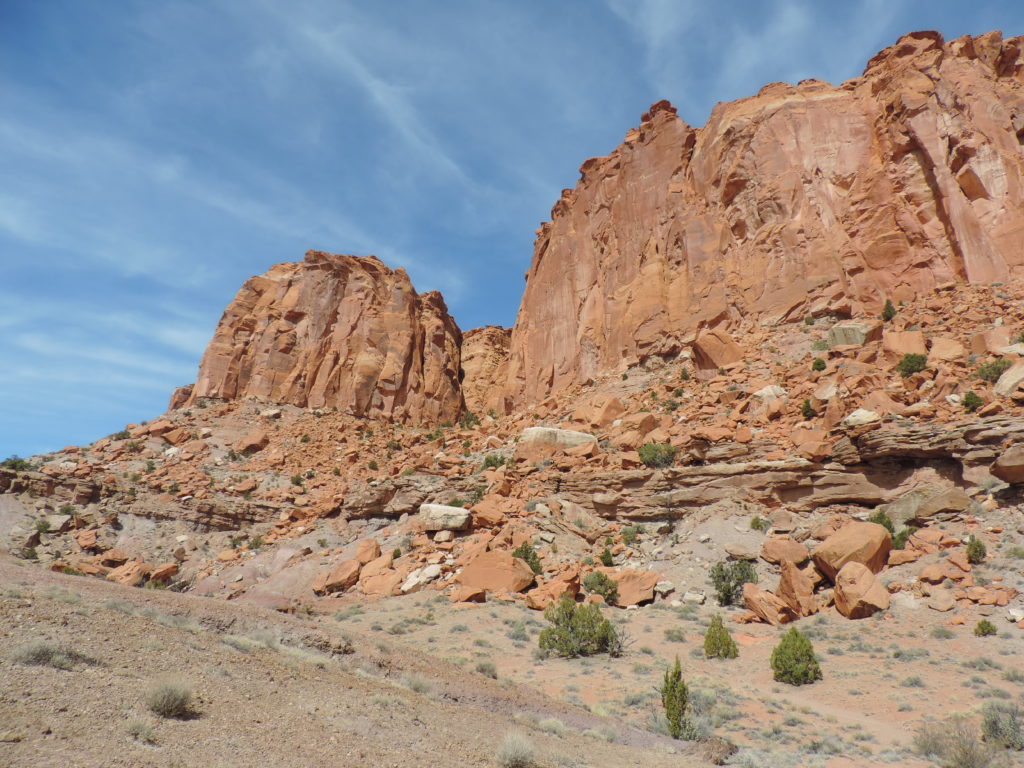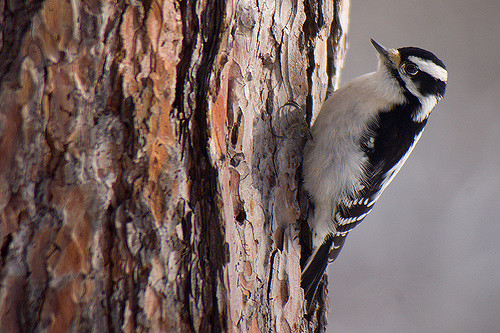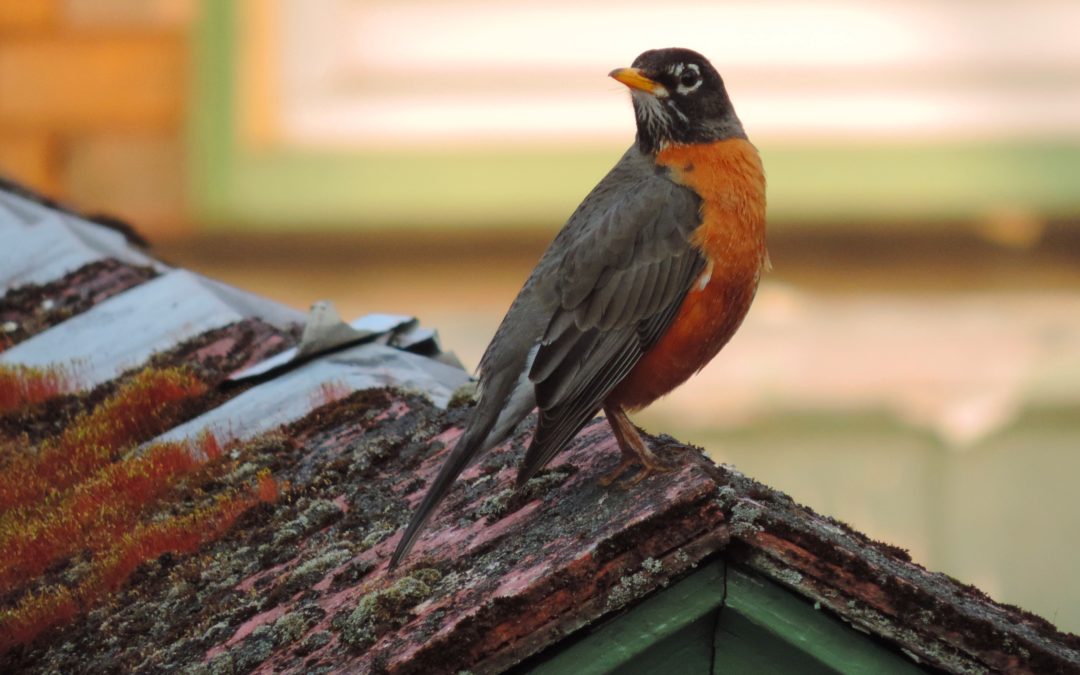I recently visited several of Utah’s National Parks –— Capital Reef, Arches, Canyonlands, Bryce and Zion. I know I will not do them justice in the few words here. In short, they were extraordinary in their grandeur and their uniqueness, especially compared to the eastern habitats that I’m accustomed to.
Each day was met with surprises, awe-inspiring views and amazing adventures around the bend in the trail. The parks were packed with visitors who, just like me, wanted to see these unique, protected places and connect with nature in their own way.

Capital Reef National Park -Photo by Katie Finch
I returned to our gradually warming spring weather. On a particularly warm afternoon, I pulled my lawn furniture from winter storage and sat on my back porch. The porch overlooks a postage stamp backyard and garage roof and is surrounded by other, similar yards, houses, and garages. I sat down to relax and watch.
There were, of course, House Sparrows and starlings. Not minding human settlement, they are some of the most numerous birds in North America. Both species populations’ exploded shortly after being brought to North America from Europe. If success is measured by the ability to adapt, they win.
Today the starlings are making quite a racket in the Blue Spruce. Four of them hop around, their iridescent coats shining in the late afternoon sun. Their sounds vary from high-pitched squeaks and squawks, to something sounding like cat meows.
A pair of House Sparrows hops from the tree to the garage roof, gathering sticks, moss and old leaves, presumably for their nest. The female disappears from view and comes back a few moments later with a large piece of pink house insulation. With it in her beak, she flies three houses down and disappears into a small hole under the roof awning. Her partner chips outside, standing guard as she adds to the nest inside.
An Eastern Phoebe sits quietly, her whole body still except for her tail, which bounces up and down. When the sparrows leave she investigates ledges, perches and even the textured brick of the house next door. Perhaps she is also looking for a place to set up shop and nest.

Downy Woodpecker Photo by Tom
LeBlanc
The ash tree in the backyard still bears the blond marks of last summer’s woodpecker feeding. I recall watching Downy Woodpeckers for several days picking and pecking at the branches and bark. They were most likely after Emerald Ash Borer larva. This nonnative insect caught an accidental ride in packing material from Asia. It spread over much of the northeastern forests, including to my small backyard. Without predators, it is devastating ash trees, the larva eating under the bark, cutting off the mode of travel for water and food in the tree.
A Blue Jay flies in, landing on the moss-covered roof of the garage. Its blue is a striking contrast to the greens and reds of the moss. As the jay bends forward, I expect him to come up with an insect or a beak full of nesting material. To my surprise, the jay pulls from the moss a big, fat acorn. A few hops up the roof and he pulls out another, then another. Into his crop they go. A few minutes later he comes back for 2 more acorns. Now in an oak forest, this would be ordinary. But in a neighborhood, where there are no oak trees to be seen it seems unusual. I can assume the jay has gathered the acorns from elsewhere and stashed them in the deep moss for future eating.
I put away my chair as the air cools. The American Robins sing the sun down and the street lights flicker on. This quiet time is reflection time. The parks I visited, as well as those across the country are one of the best ideas our country had. The flora and fauna need those spaces to survive. But so do we. We need those places to understand the world and our place in it, to refresh and renew our mind, our body and our soul.
But we don’t need to wait to take a vacation to see and appreciate the natural world, then come “back to reality” when our vacation is over. Nature is all around us. It is our reality. It is in our everyday places and in our everyday lives. It may not seem at first to be as majestic as a national park. My backyard yard certainly isn’t. Nor is it grand or majestic. But it is important to the animals that live there and perhaps I can find the beauty and the surprise there for an everyday connection to the natural world.
Audubon Community Nature Center builds and nurtures connections between people and nature. ACNC is located just east of Route 62 between Warren and Jamestown. The trails are open from dawn to dusk as is Liberty, the Bald Eagle. The Nature Center is open from 10 a.m. until 4:30 p.m. daily except Sunday when it opens at 1 p.m. More information can be found online at auduboncnc.org or by calling (716) 569-2345.


Recent Comments